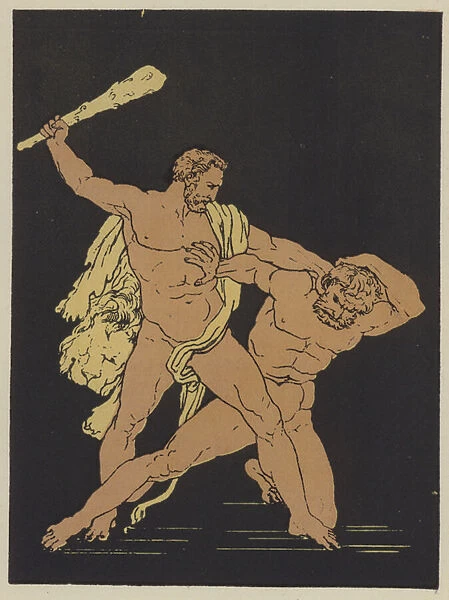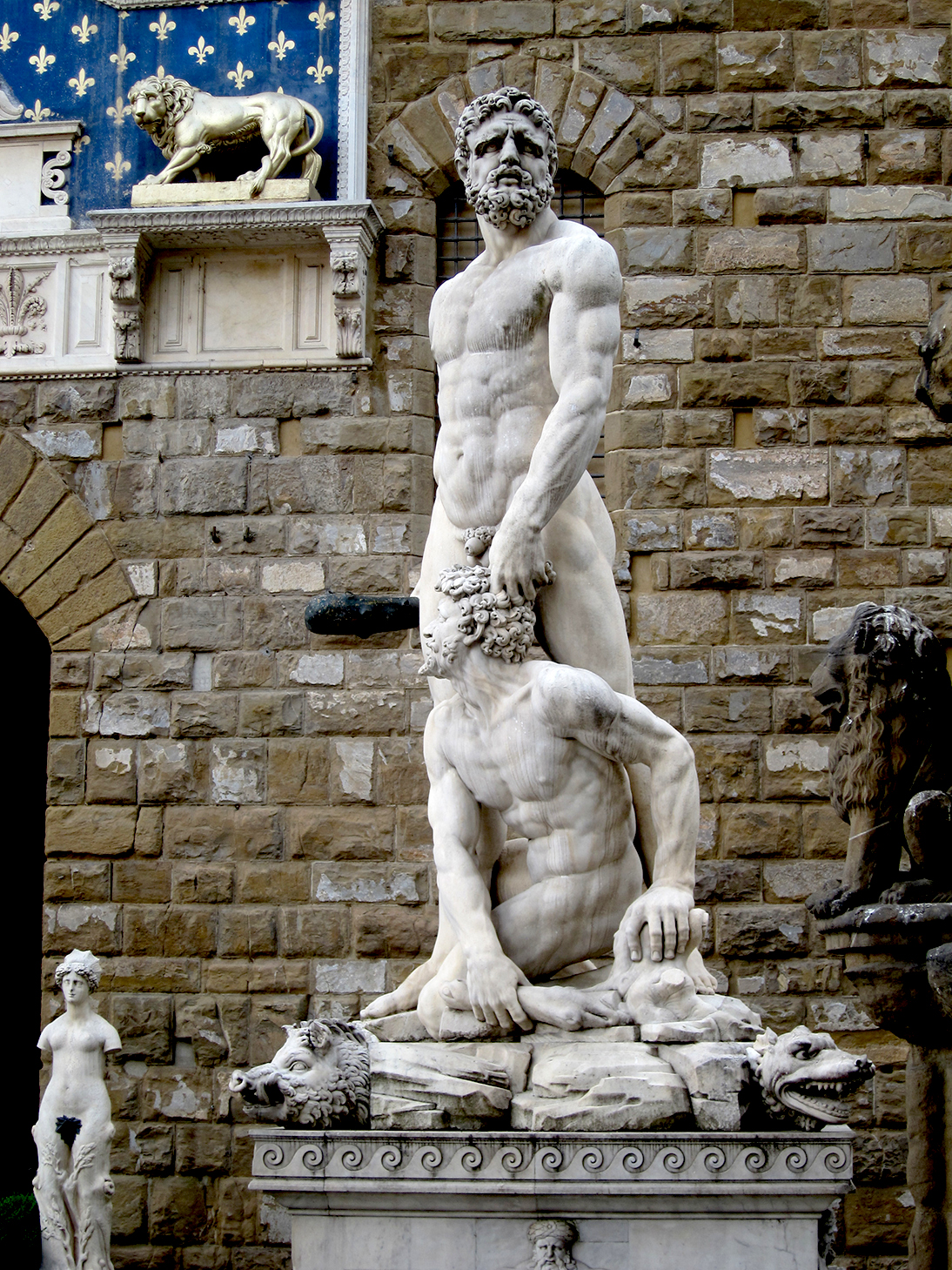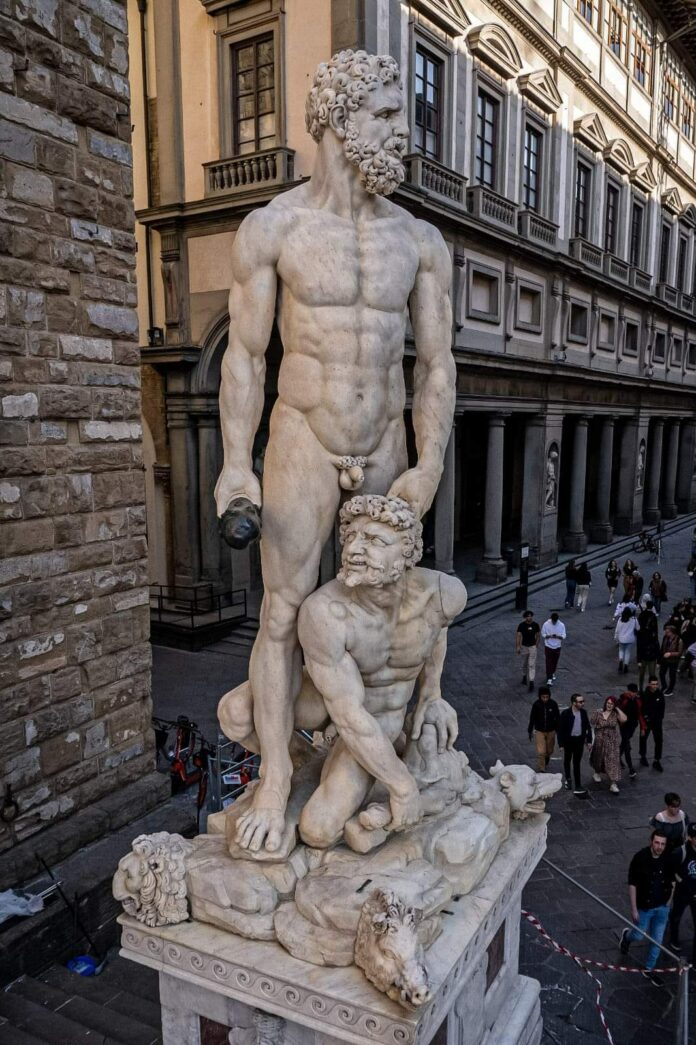Baccio Bandinelli, an Italian sculptor (1493-1560), created the magnificent marble sculpture “Hercules and Cacus” between 1530 and 1534. Standing at an impressive height of 505 cm, this masterpiece is prominently located to the right of the entrance to the Palazzo Vecchio in Piazza della Signoria, Florence. The sculpture was commissioned to complement Michelangelo’s iconic “David” and marked the return of the Medici family to power in the city.
Historical and Political Significance
The “Hercules and Cacus” sculpture is not just a work of art but also a symbol laden with political significance. In Renaissance Florence, it came to embody the ideals of resistance and the fight for freedom. The citizens of Florence held the demigod Hercules in high esteem, considering him a foundational figure for their city. This reverence is evident in the placement and grandeur of the sculpture.

The work features intricate details, including a base adorned with busts of fauns and the artist’s signature in Latin. Over the centuries, it has been a subject of varied interpretations and conflicting evaluations. Despite this, the sculpture remains a cherished emblem for the Florentines.
Artistic Composition and Restoration
Recently restored, the sculptural group presents an allegory of Hercules’ strength and ingenuity in defeating the wickedness of Cacus. The composition showcases the dynamic struggle between Hercules, representing virtue and heroism, and Cacus, embodying evil and chaos. The vivid depiction of this mythological episode underscores Bandinelli’s skill in capturing movement and emotion in marble.

The Myth of Hercules and Cacus
The story of Hercules and Cacus is a fascinating episode from Roman mythology, chronicled by Titus Livius. Cacus, a fire-breathing giant and the son of Vulcan, lived in a cave on the Aventine Hill before the founding of Rome. His nefarious deeds, particularly the theft of cattle, terrorized the people of Latium and the nearby Arcadians.
According to the legend, Hercules, after slaying Geryon, led a herd of exceptionally beautiful cattle to rest near the Tiber River. Exhausted from his journey, Hercules fell asleep, allowing Cacus, captivated by the cattle’s beauty, to seize some of the finest cows and drag them backwards into his cave. This cunning act was meant to conceal the theft, as the reversed hoofprints misled pursuers.
When Hercules awoke and discovered the missing cattle, he searched for them, eventually leading the herd away from the cave. However, the lowing of the cows inside the cave betrayed Cacus’s deception. In a fierce battle, Hercules overpowered Cacus, killing him with his club and liberating the region from his tyranny. In gratitude, King Evander of Latium dedicated an altar to Hercules, commemorating his heroic deeds.
Conclusion
Baccio Bandinelli’s “Hercules and Cacus” is a testament to the artistic excellence and cultural richness of Renaissance Florence. Its blend of mythological narrative and political symbolism continues to captivate viewers, making it an enduring icon in the heart of Florence. The sculpture not only highlights the mastery of Bandinelli but also reflects the enduring legacy of classical myths in shaping the cultural identity of a city.




